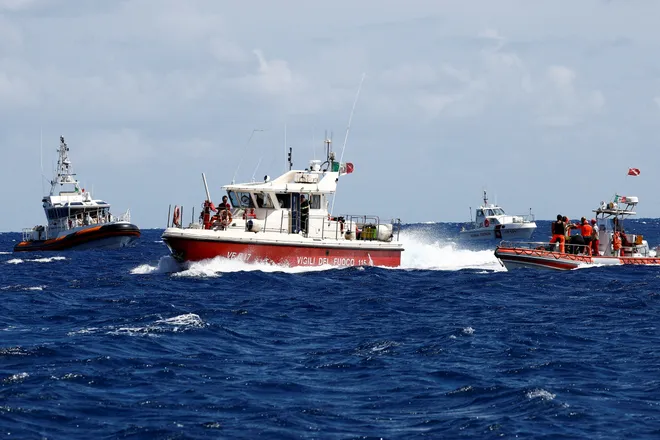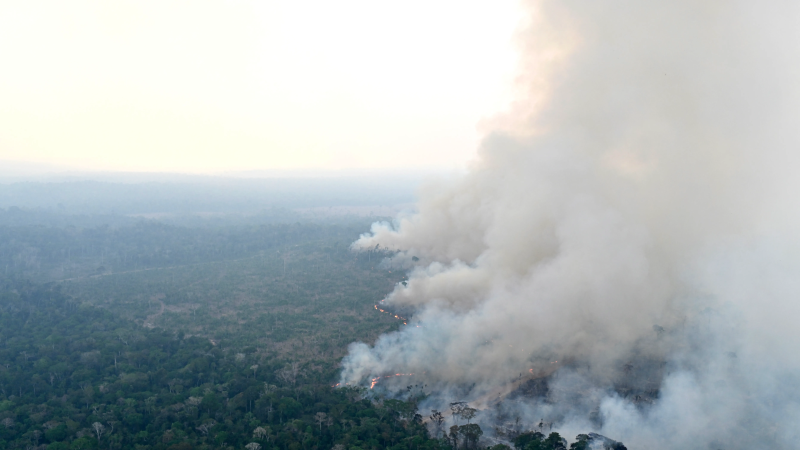Experts puzzle over why Bayesian yacht sank. Was it a 'black swan event'?
The Bayesian set off on a leisurely cruise around Italy's southern coast on a sunny day in late July.
The luxurious super yacht − which boasted one of the largest masts in the world and carried a crew of business moguls, including British tech tycoon Mike Lynch and his family and a chair of Morgan Stanley − set sail from the Amalfi Coast, bound for Sicily.
Less than a month later, the ship had sunk 160 feet under the water, leaving its cook dead and six of its passengers, including at least two Americans, missing and prompting a massive search that has drawn international attention.
Now, experts are trying to piece together why in the early hours Monday the Bayesian was quickly pulled under the waves amid a storm that saw at least one tornado spin up over the water.
Breaking news to start your day smart. Sign up for USA TODAY's Daily Briefing newsletter.

A perfect storm led to Bayesian sinking, experts say
The combination of unlikely factors that could have contributed to the ship's fate constituted a "black swan event," Matthew Schanck, chairman of the Maritime Search and Rescue Council, told USA TODAY.
The Bayesian was well-built: A 2008 product of Italian ship maker Perini, it was constructed in accordance with international maritime standards and commercially certified by the U.K.'s Maritime and Coastguard Agency, according to Schanck.
The bout of bad weather that swept the area when the ship went down was also out of the ordinary in the northern Mediterranean, "which isn't renowned for prolonged, significant stormy weather," he said.
"The fact that those two elements have then resulted in the foundering of a super yacht is pretty extraordinary," Schanck said. "These things don't happen every day."
After the ship sank just before 5 a.m. local time, 15 people, including a 1-year-old, were pulled from the water. Some were rescued from a life raft by the crew of a ship docked nearby.
Ricardo Thomas, the ship's cook and a native of Antigua, was found dead, according to authorities.
As of Tuesday, six people were missing, including Lynch and his 18-year-old daughter. Several missing passengers were involved in Lynch's trial on fraud charges, including Jonathan Bloomer, a Morgan Stanley chair who served as his character witness, and one of Lynch's attorneys. Lynch, accused of fraud after he sold his company to electronics giant Hewlett-Packard, was acquitted of all charges weeks ago.
Who is Mike Lynch?UK entrepreneur among those missing after superyacht sinks off Sicily
Tornado formed over unusually hot water
Storms in the area that night may have whipped up a water spout, a tornado over the water, according to local meteorologists.
It was likely triggered by the water's unusual warmth, said Rick Shema, a certified consulting meteorologist who served in the Navy.
"The water spout was an uncommon occurrence," he said. "But again, these things happen, especially in warmer water."
At 83.7 degrees, water in the area was more than 3 degrees hotter than average on the day the Bayesian sank, likely the result of climate change, Shema said.
"Hurricanes can form at 80 degrees. This was almost four degrees higher than that," he said.
The water spout may have spun up when cooler air dropped from mountainous places nearby onto the hot water, he said. "A water spout is a vortex, basically like a tornado, spinning real fast, sucking up water and moisture as the column rises," he said.
Although water spouts only reach around 120 mph, as compared to tornadoes on land, which can reach up to 300 mph, "you don't need 200 mph to sink a ship," he said.
"Even an average tornado, 120 miles an hour, that's a lot of wind," he said, "which would heel the boat over for sure."
Water spouts spring up suddenly, Shema said. Before they strike, winds can be slow, but "once the water spout comes over, bam, it's on," he said.
Before sunrise, the ship's crew may not have seen the water spout coming. "The visibility was probably a big factor," he said.
With the windows of the yacht opened, as they likely were in the hot weather, the water spout could have triggered water that flooded through the portholes, Shema said, causing the ship to sink.
Tragedy strikes:Scramble to find survivors after Bayesian yacht sinks off Sicily coast
Search continues, but shift to recovery phase approaches
Italian authorities said the Bayesian was probably at anchor when the storm struck, meaning it couldn't maneuver and ride the waves, according to Mitchell Stoller, a captain and maritime expert witness. Other ships in the area that turned on their engines rode out the storm, he said.
"When you're at anchor and you see weather, you start your engine and you put the wind on the bow. You don't let it get on the side," he said.
Schanck said another key question concerns the position of the keel, a heavy weight underneath the boat that acts as a counterbalance to keep it upright, when the ship sank. When lifted, "that's going to affect the stability of the vessel, because, obviously, you've now raised the center of gravity of that vessel," he said.
The Bayesian was floating over 160 feet of water at the time, deep enough that the keel would likely be deployed. But the fact that "the vessel heeled over so heavily makes me question that," Schanck said.
The cause of the disaster may not be known until the ship can be examined in more detail, experts say. Prosecutors in a nearby town have already opened an investigation.
Schanck said investigators will have plenty to work with once the operation moves into a recovery phase.
"The vessel is intact and in good condition on the seabed," he said. "There's a lot of eyewitness accounts from other vessels in the area and the shore."

As the search entered its second day on Tuesday, the rescue effort may shift in that direction soon. "I suspect, later on, today or tomorrow, we'll probably see some mention of a recovery operation being stated," Schanck said.
The decision to would depend on whether rescuers find signs of life in the ship and air pockets or survivable spaces, Schanck said. At this point, survivors on the water's surface looks unlikely. "My professional opinion is that the casualties will be located within the vessel," he said.
"There is a risk versus benefit in all maritime search and rescue incidents," he said. "Where we start transitioning to a recovery phase, that line shifts."
Contributing: Reuters
Cybele Mayes-Osterman is a breaking news reporter for USA Today. Reach her on email at cmayesosterman@usatoday.com. Follow her on X @CybeleMO.
Disclaimer: The copyright of this article belongs to the original author. Reposting this article is solely for the purpose of information dissemination and does not constitute any investment advice. If there is any infringement, please contact us immediately. We will make corrections or deletions as necessary. Thank you.




